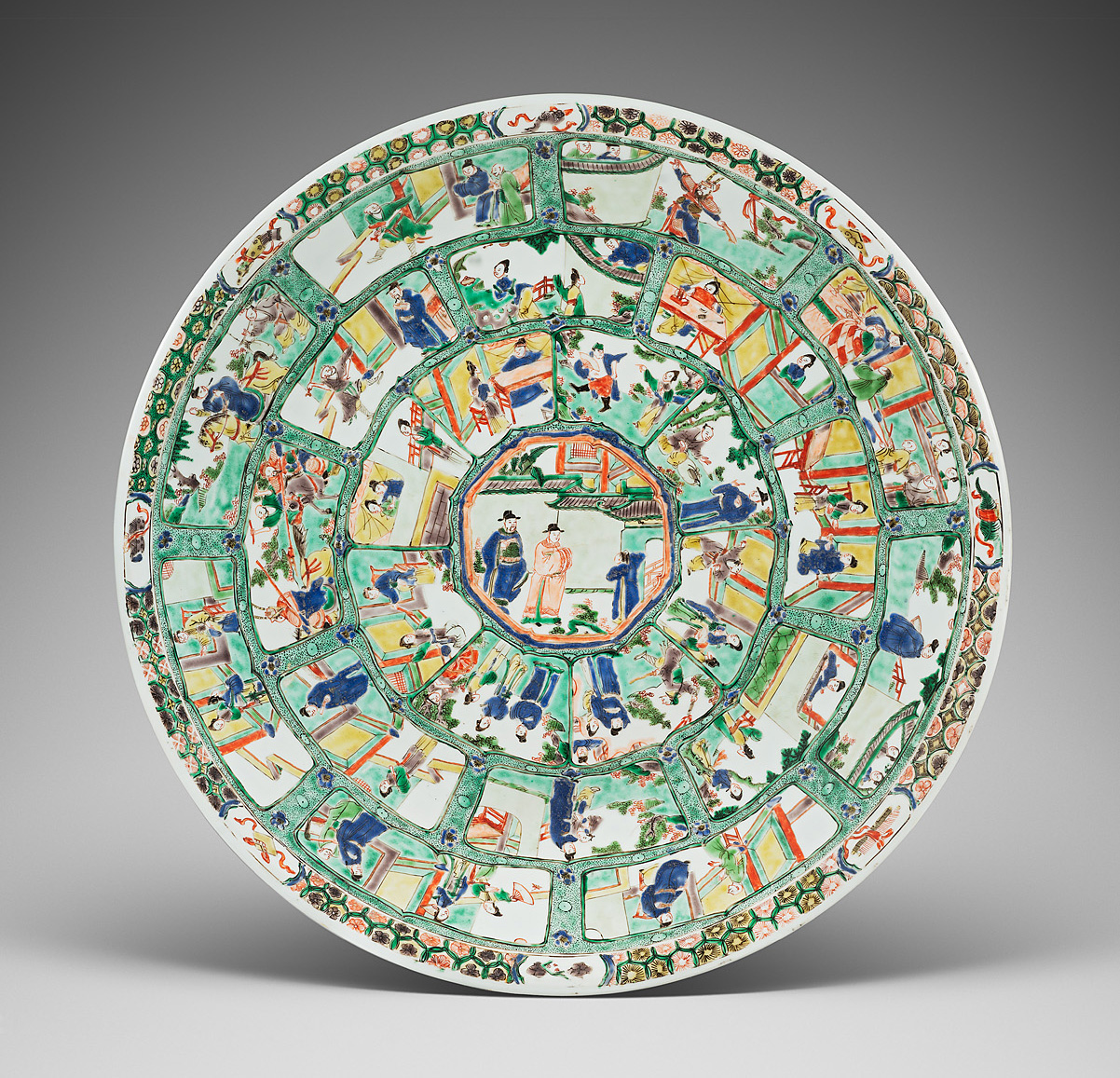Additonal informations :In China, at the end of the 12th century, a certain Dong Jieyuan wrote a book in which he compiled existing textual variants of popular theatrical plays, romances and ballads recounting a well-known love story. This work was published as the Xixiangji zhugongdiaoi (The Story of the Western Wing in All Keys and Modes). Subsequently, this book was adapted and developed by Wang Shift (c. 1250-1300), a playwright, who published it as a comedy play in eight books, called the Xixiangji (The Romance of the Western Chamber). While Xixiangji became part of classical Chinese literature, the tale itself remained immensely popular among all social classes in China. Even as recently as the 1980’s in Beijing, the theme was used in operas and films. One can safely say that the Xixiangji is an essential part of China’s oral, literary and theatrical heritage.
Due to the immense popularity of the tale in China, the most significant scenes became classical images that were readily recognized by the public. Woodblock illustrations in the numerous editions also focused on these core scenes, thereby creating a corpus of motifs that was widely adopted by painters, silk embroiderers, lacquer workers and other craftsmen.
Porcelain decorated with “The Romance of the Western Chamber” became a widespread fashion in the Shunzi period (1644-1661). Its popularity culminated during the Kangxi period (1662-1722). When decorated with these depictions, famille verte wares were not only produced for the domestic Chinese market but were also exported to Europe.
The romance is told in a series of 24 panels arranged in three bands quite similar to a modern comic strip, depicting the essential scenes in sequence. The extensive depiction of the story presented here is very rare. Bowls decorated with four scenes, or vases and pots decorated with six, or eight scenes are more prevalent.
Following the suppression of the Ming rebellions in 1683, porcelain decorations that contained hidden political messages and allusions to the “good old Ming times” were unwelcome, hence the need for new sources of decorations. The “innocent” Romance of the Western Chamber emerged as an ideal source of motifs and became one of the most popular theatrical and literary themes.
